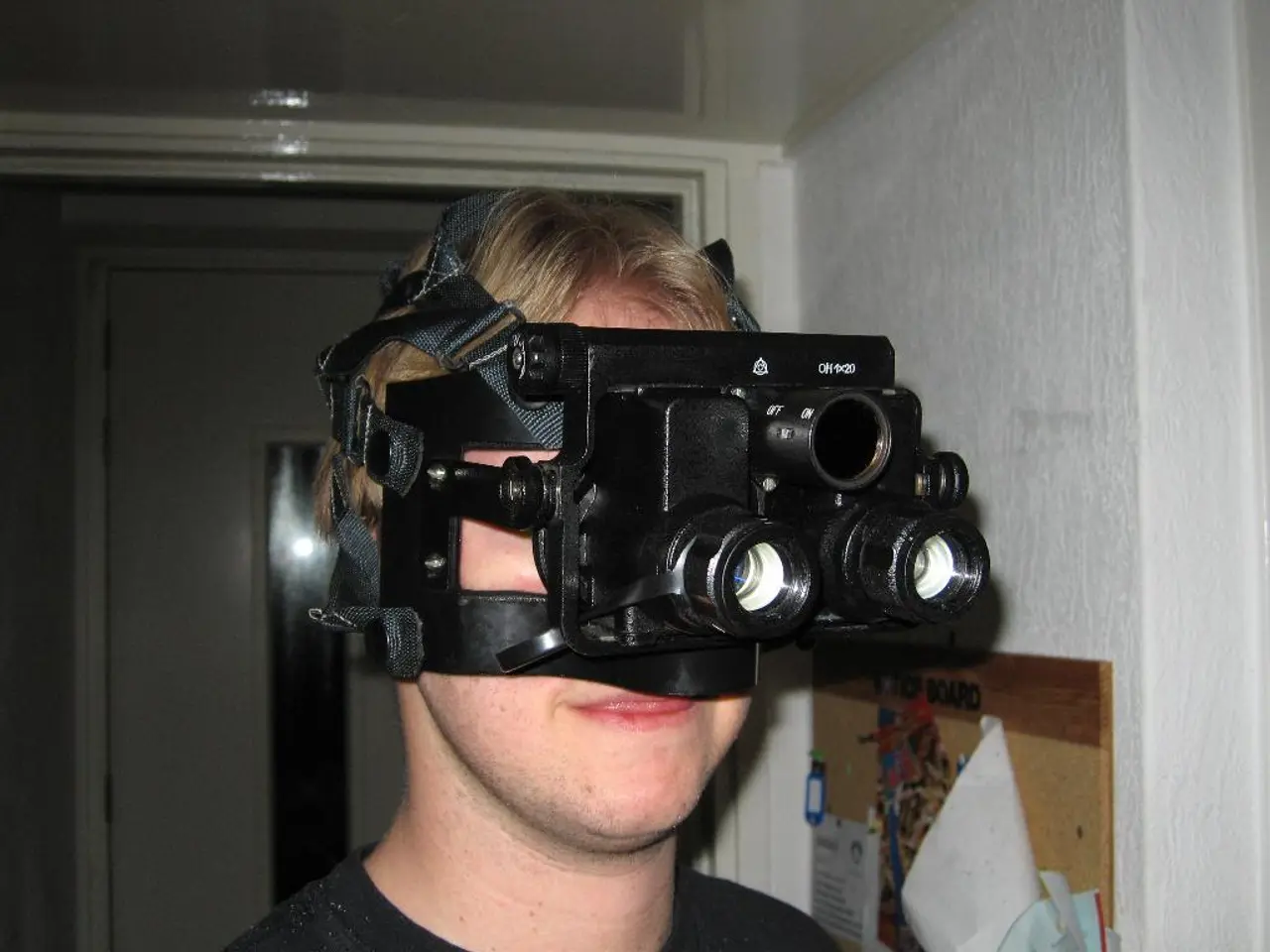Elon Musk Expands Horizons into Virtual Reality Realm: Notable Development on the Horizon?
Neuralink's Brain-Computer Interface and the Future of Virtual Reality
Elon Musk, the visionary behind SpaceX and Tesla, is spearheading a new venture into virtual reality (VR) technology through his company, Neuralink. Musk believes that VR can help humanity better understand and explore the universe by creating realistic simulations of space environments.
However, the road to this futuristic vision is fraught with challenges. Significant investment in research and development is required to overcome the limitations of current VR systems, including advancements in hardware, software, and engineering.
Neuralink's brain-computer interface (BCI) technology is currently in advanced clinical trial stages. As of mid-2025, the technology has shown promising developments but still faces technical challenges. Neuralink has conducted trials with human participants who have received implants enabling them to control computer cursors, design 3D objects, and play video games through thought control.
Despite the technical hurdles, Neuralink's development has received "breakthrough" status from the U.S. federal government, aiming to accelerate progress. The company has also expanded into Canada with regulatory approvals for clinical trials. Elon Musk envisions integration of Neuralink implants for full brain-AI interconnection by 2028, potentially enabling consciousness-level communication between humans and machines.
The potential impact of Neuralink and similar BCI systems on understanding reality and technological innovation is profound. They offer revolutionary new ways to interface directly with computers, enabling restored mobility and independence for people with paralysis or neurodegenerative diseases by bypassing damaged neural pathways.
Moreover, they simulate sensory experiences, such as vision restoration through prosthetic vision simulations in immersive VR. Future applications could include memory enhancement, sensory substitution, and even blending human thought with artificial intelligence, potentially transforming how humans experience and manipulate reality itself.
This technology could catalyze unprecedented innovation in human-computer interaction, robotics, AI integration, and medical rehabilitation, marking a significant leap in both neuroscience and digital technology convergence.
However, challenges in long-term implant stability, regulatory approval, and ethical considerations remain active areas of focus.
Musk also sees VR as a means to drive technological innovation in fields such as education, manufacturing, and transportation. Advancements in energy-efficient computing can help reduce the power consumption of VR systems, making them more accessible to the masses.
The development of Musk's VR system has sparked discussions about its potential implications on our understanding of reality. The Simulation Hypothesis, proposed by philosopher Nick Bostrom, suggests that our reality might be a computer simulation created by a highly advanced civilization. Musk has acknowledged the possibility of the Simulation Hypothesis, proposing that our reality might be a computer-generated simulation.
VR can be used to create virtual Mars environments, helping prepare for future missions to the red planet. Neuralink's technology could revolutionize the way we experience virtual reality by creating a direct interface between the brain and a virtual reality system, enabling users to control virtual reality systems using nothing but their thoughts.
In summary, Neuralink’s VR/BCI system is progressing through clinical trials with improving implant reliability and encouraging user feedback. Its broader technological and philosophical implications suggest a disruptive potential to reshape human experience, cognitive capabilities, and the interface between biological and digital realities within this decade. However, challenges in long-term implant stability, regulatory approval, and ethical considerations remain active areas of focus.
**References**
[1] Neuralink. (2025). Neuralink's Brain-Computer Interface Technology: Progress and Challenges. Retrieved from https://www.neuralink.com/progress
[2] Musk, E. (2023). The Future of Virtual Reality: A Conversation with Elon Musk. Retrieved from https://www.ted.com/talks/elon_musk_on_the_future_of_virtual_reality
[3] Bostrom, N. (2003). Are You Living in a Computer Simulation? Philosophical Quarterly, 53(211), 243-255.
[4] Khatib, O., & Musk, E. (2022). Neuralink: The Future of Brain-Machine Interfaces. IEEE Spectrum, 59(10), 44-51.
[5] Kell, J. (2021). The Ethical Implications of Neuralink's Brain-Computer Interface Technology. Journal of Medical Ethics, 47(12), 786-791.
Science and artificial intelligence will play crucial roles in Neuralink's advancements, as they aim to develop intelligent systems capable of integrating with human brains.
Space-and-astronomy could benefit significantly from Neuralink's virtual reality technology, as it might provide innovative solutions for preparing astronauts for space missions through immersive simulations.




